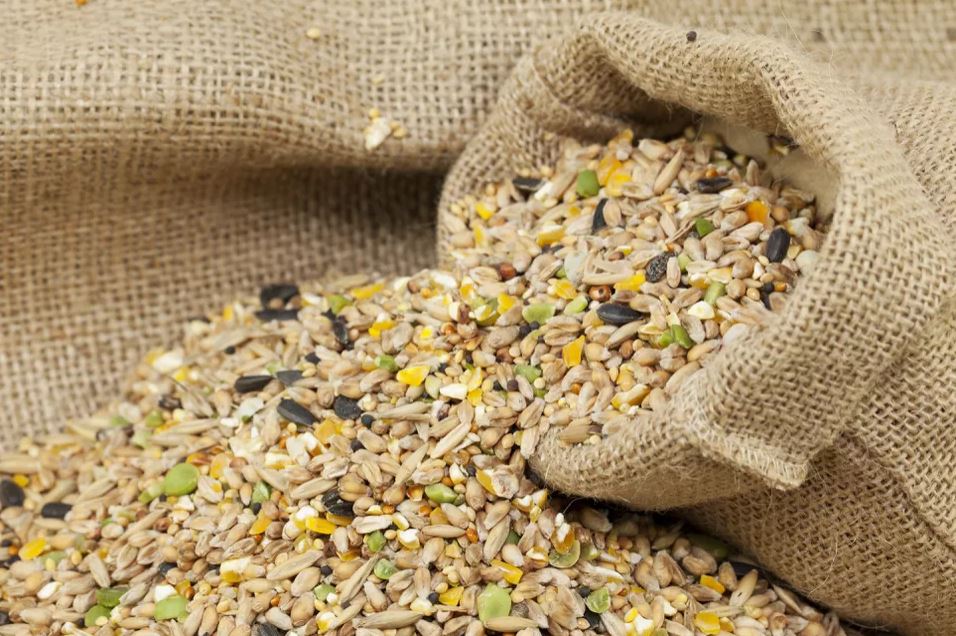
In summertime when food is abundant, birds are more likely to scavenge for their own meals. However, resources are scarce during the cooler months. So, this season, birds could use a little assistance finding a reliable sources of food. Installing a bird feeder in your backyard is a great way to attract birds to your lake home and enjoy birdwatching on a regular basis. But when it comes to filling those feeders, things get trickier. If you decide to make your own bird seed (a fun craft project for everyone), how do you know what the “dos” and “don’ts” are? Which types of seed will attract a wide range of birds? At Lake Homes, we’re here to help. Check out these tips for creating DIY bird seed this winter!
Essential Ingredients
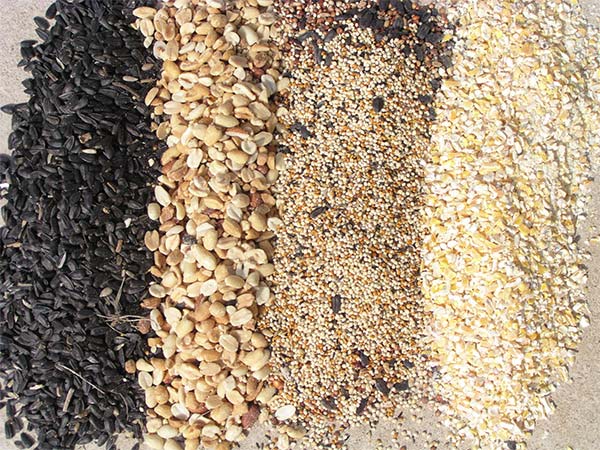
The key to creating a delicious homemade birdseed recipe is including nutritious ingredients that birds need in their diet. Luckily, these essential components are inexpensive! You can usually find them in bulk at most grocery stores. For instance, peanuts are beloved by birds and provide them with enough protein for their diet. Besides peanuts, any good birdseed mix will include sunflower seeds. Whether hulled or in the shell, these seeds are highly nutritious. Specifically, black oil sunflower seeds have high-fat content, as well as protein and fiber, which is perfect for birds.
Extra Ingredients
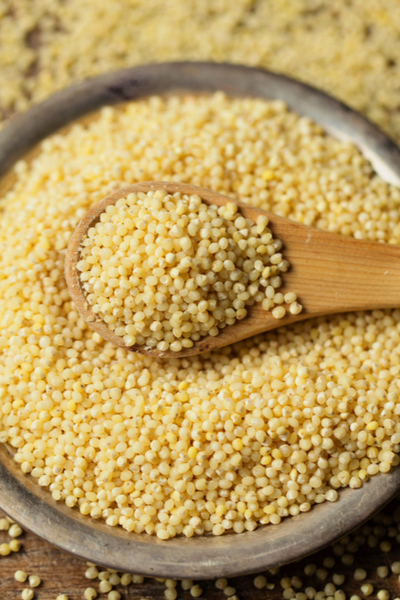
While key ingredients like peanuts and sunflower seeds may be the star of the show, supplemental ingredients are necessary to round out the nutritional value of your DIY bird seed. First off, white millet (as opposed to red millet) is an excellent source of protein, calcium, magnesium, oil, and phosphorus. Similar to white millet, cracked corn is a great high-protein ingredient. As opposed to whole corn, cracked corn is easier for both small and large birds to consume. Just be sure to use limited amounts! Too much cracked corn can absorb moisture and dry out your other ingredients. Finally, an ingredient often excluded from store-bought mixes is dried fruit. A handful of raisins (white or red) can attract a host of birds to your backyard who might not otherwise hang around.
Ideal Ratio of Ingredients
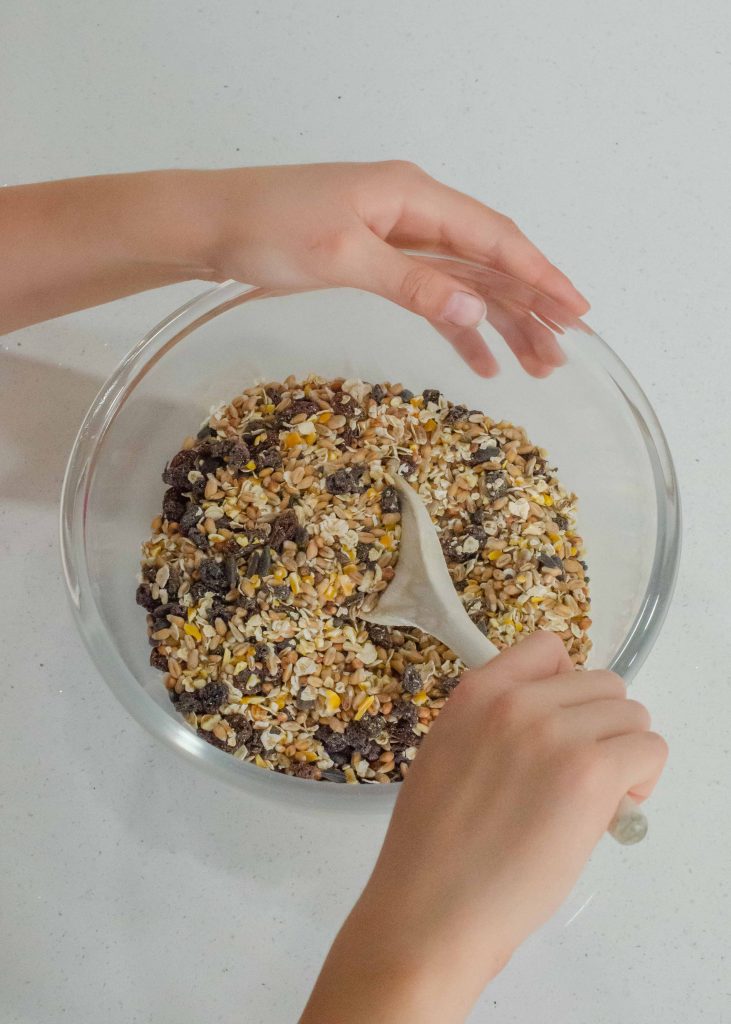
As one might expect, the essential ingredients (e.g., peanuts and sunflower seeds) should be prioritized in these DIY bird seed recipes. For a standard recipe option, include one cup of peanuts and sunflower seeds and ½ cup of extra ingredients. This ratio excludes dry fruit, in which a little bit (just a handful) goes a long way.
Ingredients to Avoid
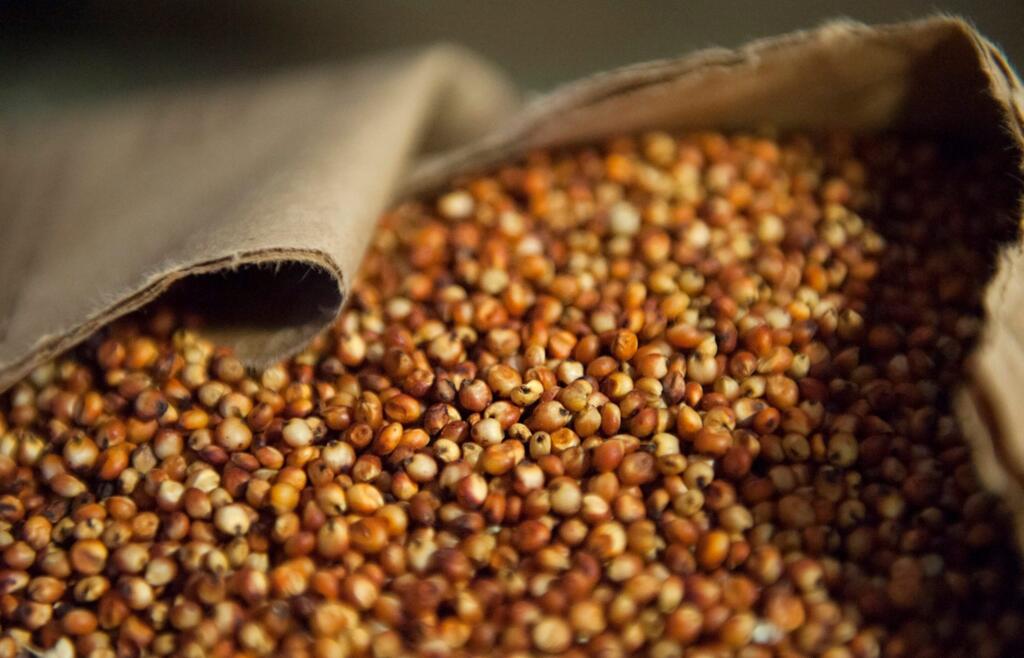
Although birds are known to devour a host of seed-like ingredients, there are several that you’ll need to avoid when creating your own DIY bird seed. Among them is milo, a filler grain. This large, reddish seed with a round shape is less appealing to most birds. A few select species, such as doves, enjoy eating milo, but including it in your recipe will turn the majority of birds off to your backyard. Canary seed, grass seed, oats, wheat, and sticks are other bad ingredients to avoid. One of the benefits of creating DIY bird seed is that you can avoid these “bad” or “filler” ingredients that are often included in cheaper store-bought mixes. In fact, so many mixes contain more milo than other, healthier, and more appealing ingredients. Making your own birdseed will ensure that birds are attracted to the food you’re offering!
With these tips, your backyard is bound to be a hotspot for birds this winter!

